Need help choosing a small tree to plant in your tiny yard? Knowing which tree species remain small will aid you when planning out your limited-space yard.
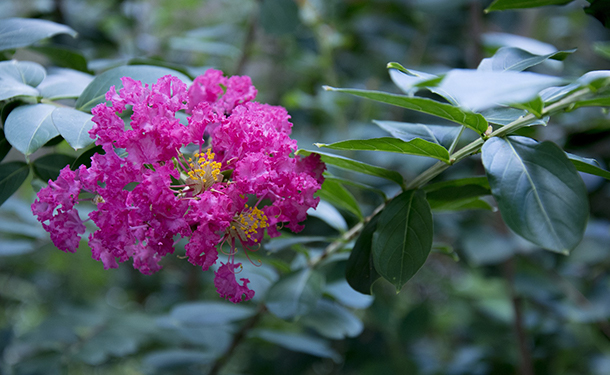
thetreecareguide.com gathered species, planting, and care information for 5 small (understory) trees that won’t cramp or ruin what little space you have in your yard.
Small Tree Species
You can choose a smaller, more compact tree species when you don’t have enough space in your yard for a towering eucalyptus, massive oak, or southern pine. Small, ornamental, or understory trees range in size from 10 to 40 feet and are easier to care for and prune. Consider the following small landscape tree species:
1. Japanese Maple (Acer palmatum)
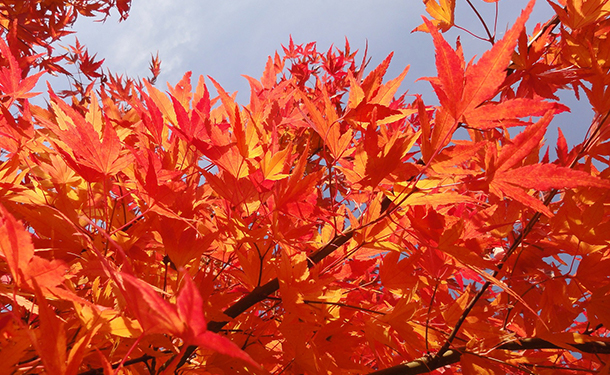
This tree is typically grown as a small single-stemmed tree or a large multiple-stemmed shrub. Its shape is rounded to broad-rounded, with a layered branching structure. Japanese maples are magnificent specimens or accent trees performing well in a small grouping, privacy screen, or shrub border.
Mature Height – This species reaches 15 to 25 feet, with a 20-foot spread
Hardiness Zone – 5 through 8
Species Type – Deciduous
Features – During fall, maples display an incredible show of autumn color before leaf drop. Then, buds swell in early spring, bringing new foliage in amazing colors that often rival the autumn spectacle.
Care Tip – Always provide a 2 to 3-inch layer of organic mulch around Japanese maple trees (from the trunk to the dripline).
2. Crabapple (Malus)
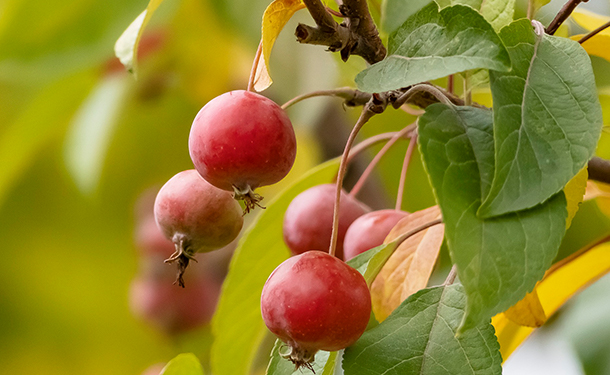
Ornamental flowering crabapple trees are valued for their flowers and fruit. The blooms, which emerge before or with the foliage (in the spring), range from white to red. The fruit appears in summer and is less than 2 inches in diameter.
Mature Height – This species reaches 15 to 25 feet, with a 20-foot spread
Hardiness Zone – 4 through 8
Species Type – Deciduous
Features – Crabapple varieties are widely-grown for their attractive form, spring flowering, and decorative fruit.
Care Tip – Crabapples adapt to most soil conditions as long as they are situated in well-drained soil. Avoid foliar diseases by planting them in a location offering (and pruning seasonally for) good air circulation.
3. Cypress (Cupressus)
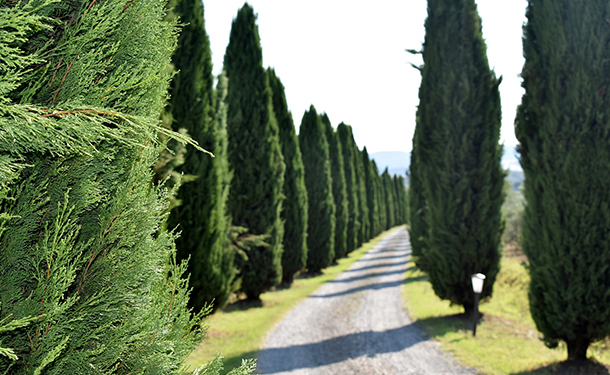
This evergreen tree species’ foliage is scale-like (2–6 mm long), arranged in opposite decussate pairs, and persists for three to five years. The leaves are more needle-like but have a lush, full appearance on young trees up to two years old.
Mature Height – This species reaches 40 to 60 feet, with a 20 to 25-foot spread
Hardiness Zone – 4 through 10
Species Type – Evergreen
Features – While tall, this species has a compact, dense spread, making them ideal for privacy screens in landscapes with limited available space.
Care Tip – Plant your cypress away from other shade trees or structures that may give them partial shade. Prune this species sparingly (hire a professional tree service when pruning is necessary).
4. Flowering Dogwood (Cornus florida)
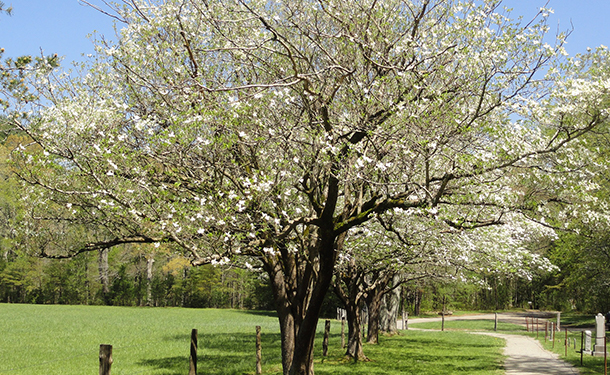
Flowering dogwoods are shrubs or small, low-branched trees typically with a flat-topped crown, oval or ovate leaves, and creamy-white flowers with 4 petals each appearing in early spring.
Mature Height – This species reaches 20 to 30 feet, with a 25 to 30-foot spread
Hardiness Zone – 7 through 9
Species Type – Deciduous
Features – Flowering Dogwood is among the most beautiful eastern North American trees with attractive early spring flowers, red fruit, and scarlet autumn foliage.
Care Tip – Plant your flowering dogwood in well-drained, moist soil. Amend the soil with organic material for the best growth.
5. Crape Myrtle (Lagerstroemia)
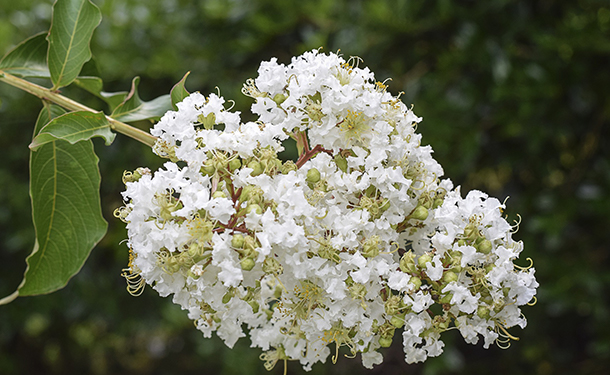
Crape myrtles are deciduous, small to medium-sized shrubs or small trees with full, moderately dense foliage, often appearing as multi-stemmed trees. Crape myrtle’s showy flowers have wrinkled petals like crepe paper. The foliage is dark green changing to yellows, oranges, and reds in fall.
Mature Height – This species reaches 4 to 20 feet, with a 6 to 15-foot spread
Hardiness Zone – 7 through 10
Species Type – Deciduous
Features – Spectacular spikes of pink, purple, white, and red flowers top their branches for months in summer. Unlike other flowering tree species, crepe myrtles can bloom all summer.
Care Tip – Crape myrtle flowers on new seasonal growth. Prune during the dormant season (late winter to early spring) before growth resumes. Avoid pruning in early fall before the first frost (pruning encourages new growth and keeps the tree from going dormant). Severe freezes can kill the plant if it is not fully adapted and dormant.
Small Trees
In this article, you discovered species, growing, and care information about 5 small tree species that fit nicely in tiny or limited yard space.
Planting small trees with limited yard space will allow you to benefit from the tree’s beauty and shade, while helping your yard resist erosion and increase your home’s curb appeal.
Selecting larger (overstory) trees for a tiny yard can result in a buckled driveway, pathway, sidewalk, or foundation from invasive roots seeking water and nutrients.
Sources:
plants.ces.ncsu.edu/plants/acer-palmatum/
hgic.clemson.edu/factsheet/crabapple/
apps.cals.arizona.edu/arboretum/taxon.aspx?id=310
uky.edu/hort/Flowering-Dogwood
extension.uga.edu/publications/detail.html?number=C944